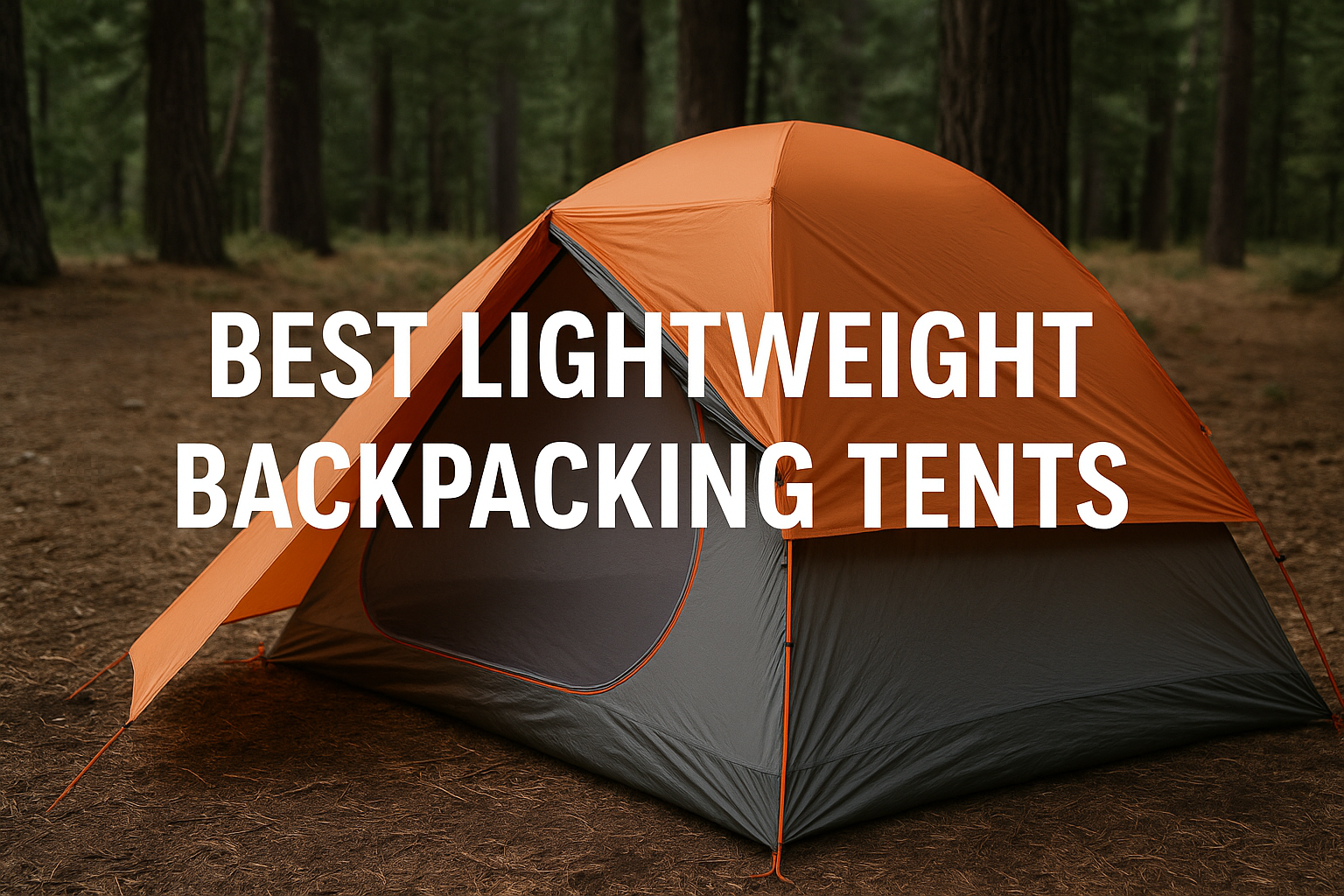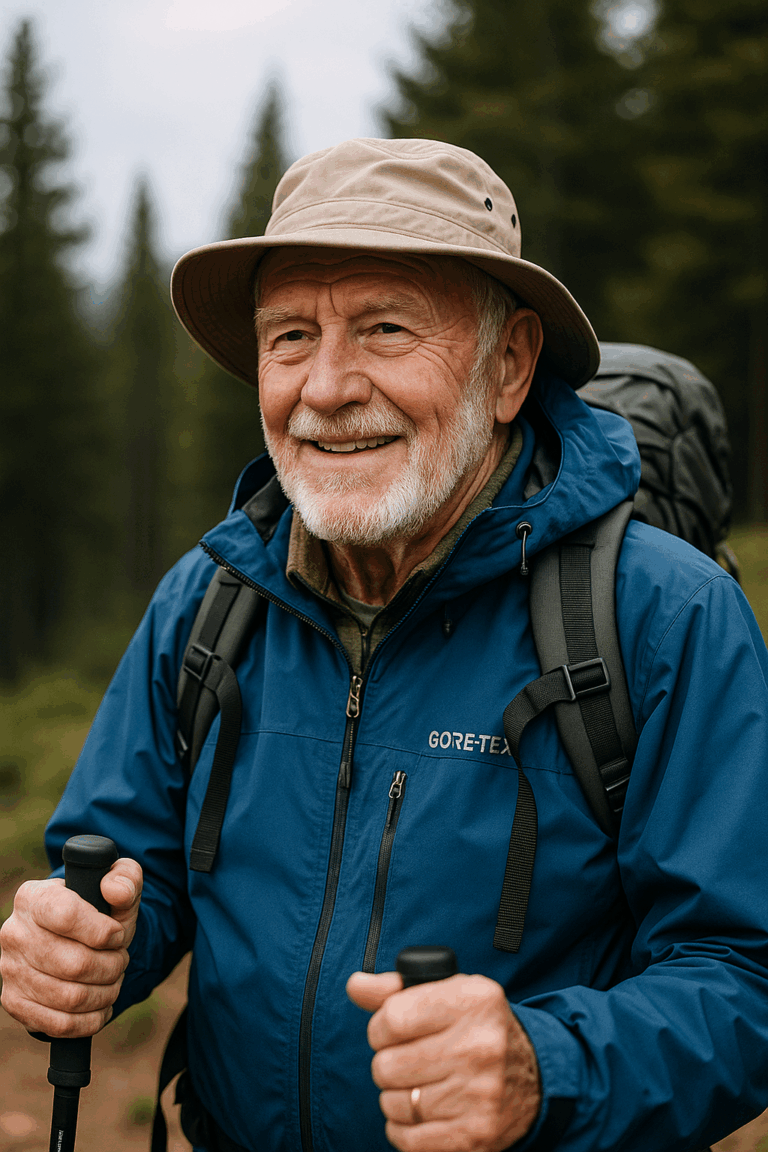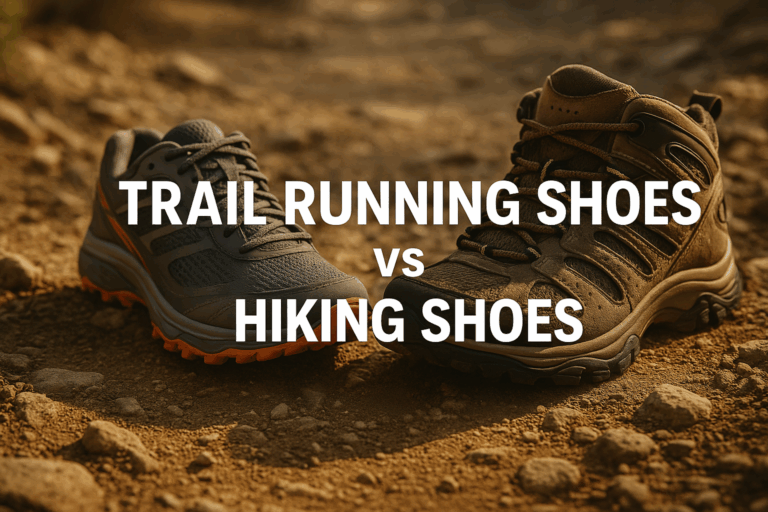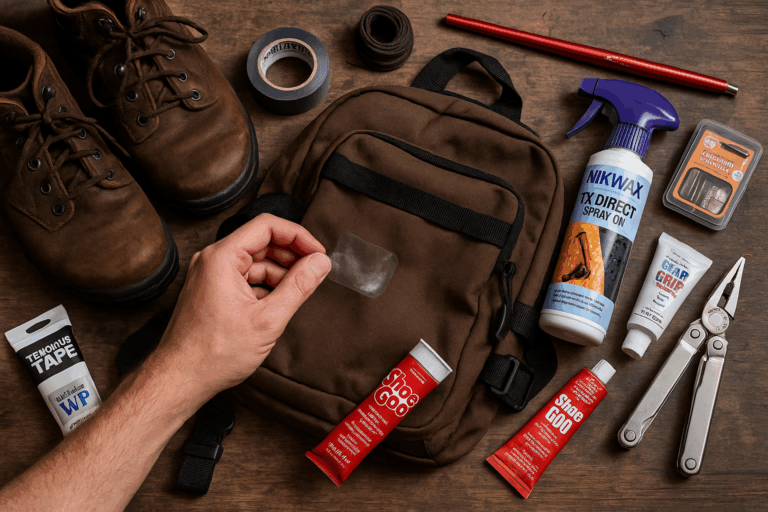Best Lightweight Backpacking Tents in 2025
Introduction
Every ounce matters when you’re carrying your home on your back! Most serious backpackers know that your shelter is one of the “Big Three” gear categories where weight savings make the biggest difference. Today’s best lightweight backpacking tents offer incredible protection while keeping pack weight minimal. I’ve tested many of the top lightweight shelter for backpacking options to find the best tents for thru-hiking and every type of backcountry adventurer.
Also check out my guide to ultralight backpacking gear essentials for 2025. You’ll find great sleeping systems, cookware, best lightweight backpacking tents, and other weight-saving camping gear to keep your pack weight down.
Did you know 8 out of 10 experienced backpackers prioritize tent weight over almost any other feature? Let’s look at the best ultralight hiking tent options to keep you comfortable without weighing you down! For a complete overview of all your minimalist backpacking gear options, check out our complete backpacking shelter guide and best lightweight backpacking tents power solutions.
Best Ultralight Backpacking Tents
When choosing the best ultralight backpacking tents, consider factors like weight, packed size, durability, and livability. The best lightweight 2-person tent should balance protection with packability for your specific backcountry needs. Whether you need a solo backpacking shelter or compact tents for long-distance hiking, understanding freestanding vs non-freestanding tents will help guide your decision.
1. Big Agnes Copper Spur HV UL2
Weight: 2 lb 11 oz | Type: Freestanding | Price: $$$
Features
This Big Agnes Copper Spur HV UL2 delivers exceptional livability with its high-volume pole architecture that creates impressive headroom for the weight.
It features two doors and vestibules for easy entry and gear storage. No more crawling over your tent partner to get out in the middle of the night!
The DAC Featherlite poles provide excellent durability while staying lightweight. These premium poles bend without breaking and have survived countless setups in rocky terrain.
Interior gear pockets and media sleeve keep essentials organized. The media sleeve holds your phone at the perfect angle for watching downloaded shows on rest days.
The fully freestanding design means no guy lines or stakes required for basic setup. This flexibility lets you pitch it on rock slabs, sand, or anywhere you can find level ground.
Pros
The livability-to-weight ratio is outstanding. Despite weighing under 3 pounds, it offers more interior space than tents twice as heavy.
During a week-long Sierra Nevada trip, my tent partner and I never felt cramped despite being stuck inside during an afternoon thunderstorm. The interior space in lightweight tents like this really makes a difference for comfort, especially when you need reliable shelter that won’t add weight to your pack.
Setup is incredibly easy anywhere. The freestanding design means you can pitch it on granite slabs or sandy beaches without hunting for suitable stake-out points.
At a wind-exposed alpine lake, I set up on solid rock using just the tent’s weight and a few strategic rocks. No stakes needed, and it stayed put all night.
Ventilation is excellent for preventing condensation. The dual doors and mesh panels create great airflow that keeps interior walls dry even in humid conditions.
After camping in the humid Southeast, I was impressed by how dry the interior stayed compared to single-wall shelters. This breathable ultralight shelter performance makes it one of the best ultralight backpacking tents for varied climates. When researching the best lightweight backpacking tents for longer trips, this tent’s reliability means you can focus on other gear priorities.
Cons
The price is steep at around $450. While the quality justifies this for frequent users, casual backpackers might find it hard to justify the expense.
I saved for months before purchasing, but after two years of regular use on everything from desert trips to alpine adventures, it’s proven worth every penny.
The floor material is quite thin and requires careful site selection. A groundsheet is highly recommended to prevent punctures from sharp rocks or sticks.
During a trip in the Rockies, I didn’t use a groundsheet and put a small hole in the floor from a hidden rock. Now I always pack the Big Agnes footprint for protection.
It’s still relatively expensive compared to budget options. While not the heaviest ultralight tent, serious gram-counters might prefer lighter alternatives.
For a 2-person tent, the 2 lb 11 oz weight is reasonable but not class-leading. Ultra-minimalists might want to look at lighter single-wall options.
My Experience
At $450, this Big Agnes Copper Spur HV UL2 has been my go-to tent for shared backcountry adventures. It’s survived everything from desert sandstorms to alpine snow, and the livability keeps my tent partner happy on longer trips where we’re comparing the best lightweight backpacking tents for group adventures.
Friends always comment on how spacious it feels inside. The high-volume design creates a surprisingly roomy feel that makes multi-day trips more comfortable, whether you’re on the Appalachian Trail or PCT.
The Big Agnes Copper Spur HV UL2 strikes an excellent balance of weight, durability, and comfort. After extensive use in varied conditions, it continues to be one of the best ultralight backpacking tents for serious adventurers who don’t want to sacrifice livability.
If you want maximum comfort in a reasonably light package, the Copper Spur HV UL2 is exceptional. Just budget for the footprint to protect that thin floor!
2. Nemo Hornet Elite OSMO 2P
Weight: 2 lb 1 oz | Type: Semi-freestanding | Price: $$$$
Features
This Nemo Hornet Elite OSMO 2P uses innovative OSMO fabric made from recycled materials that’s water-repellent and stretch-resistant without coatings.
It features dual vestibules despite the ultralight weight. This gives both occupants their own entry and gear storage space.
The Volumizing Flybar™ technology adds significant internal space by lifting the fly away from the tent body. This creates more headroom and reduces the claustrophobic feeling common in ultralight tents.
Fast pitch setup requires minimal stakes and guy-lines. The semi-freestanding design balances ease of setup with weight savings.
The sustainable OSMO fabric eliminates the need for chemical coatings while maintaining excellent weather protection. This eco-friendly approach doesn’t compromise performance.
Pros
The weight is impressive for a true 2-person tent with dual doors. At just over 2 pounds, it’s among the lightest full-featured shelters available.
During a thru-hike attempt on the Colorado Trail, every ounce mattered. The Hornet Elite’s weight savings let me carry more food, water, and essential gear when comparing the best lightweight backpacking tents without exceeding my target pack weight for long-distance hiking.
The sustainable materials feel good to use. Knowing the tent is made from recycled content without sacrificing performance appeals to environmentally conscious backpackers.
The fabric feels noticeably more durable than traditional ultralight materials, giving confidence in varied conditions. This sustainability makes it one of the best ultralight backpacking tents for eco-minded adventurers.
Setup is surprisingly fast once you learn the system. The minimal stake requirements and efficient design make camp setup quick even in difficult conditions.
During a stormy evening in the Cascades, I had the tent pitched and secure in under 5 minutes. The streamlined setup process is perfect when weather is threatening.
Cons
Stability in high winds is concerning. The lightweight design and semi-freestanding nature make it less secure than heavier alternatives in extreme conditions.
During a windy night above treeline, I spent hours adjusting guy-lines and adding extra stakes. A more robust tent would have been more confidence-inspiring.
The interior space is tight for two larger people. While technically 2-person, it works better for smaller individuals or solo use with extra gear space.
My 6-foot tent partner and I felt cramped during a week-long trip. For shorter adventures it’s manageable, but longer expeditions might test your patience.
The price is quite high at around $500. This puts it in premium territory where every feature needs to justify the cost.
I debated extensively before purchasing due to the high price. The weight savings and features have proven worthwhile, but it’s definitely an investment.
The semi-freestanding design requires more site selection than fully freestanding options. Rocky or hard-packed terrain can make setup challenging.
My Experience
The Nemo Hornet Elite OSMO 2P has become my choice for weight-critical adventures. During a challenging section hike in the Sierra, its light weight allowed me to carry extra water and gear when evaluating the best lightweight backpacking tents for a dry stretch without exceeding my comfort zone.
The sustainable materials and impressive weight make it stand out in the ultralight backpacking tent reviews category. It’s one of the few lightweight shelter for backpacking options where I feel good about both the performance and environmental impact.
At $500, the Nemo Hornet Elite OSMO 2P is expensive but delivers on its promises. After extensive testing in varied conditions, it consistently performs as one of the best ultralight backpacking tents for weight-conscious adventurers.
If you want the lightest possible 2-person tent with dual doors, the Hornet Elite OSMO is outstanding. Just be prepared for some compromises in space and wind stability!
3. Zpacks Duplex (DCF Version)
Weight: 1 lb 3 oz | Type: Non-freestanding | Price: $$$$$
Features
This Zpacks Duplex uses Dyneema® Composite Fabric (DCF) that’s completely waterproof, ultralight, and won’t stretch or sag when wet.
It features two doors and vestibules despite the incredibly light weight. The asymmetrical design maximizes interior space while minimizing material usage.
The huge interior space rivals much heavier tents. The pyramid-style architecture creates surprising headroom and floor area for such a light shelter.
Dyneema fabric requires no waterproof coatings that can fail over time. The material itself is inherently waterproof and incredibly strong for its weight.
The single-wall design eliminates the weight of a separate rainfly. This contributes significantly to the overall weight savings but requires more careful ventilation management.
Pros
The weight is simply incredible. At 1 lb 3 oz for a spacious 2-person shelter, it’s among the lightest tents available anywhere.
During a long-distance hike on the Pacific Crest Trail, the weight savings allowed me to carry extra food and essential gear for longer resupply stretches. Every ounce saved makes a difference over hundreds of miles when choosing the best lightweight backpacking tents for compact tents for long-distance hiking.
The pack size is remarkably small. It compresses down to about the size of a water bottle, leaving more room for other gear in your pack.
The material feels bomber despite being ultralight. DCF is incredibly tear-resistant and has survived years of use without showing significant wear.
After bushwhacking through dense brush that would destroy most ultralight fabrics, the Duplex showed minimal damage. This Dyneema tent fabric advantages make it one of the best ultralight backpacking tents for challenging terrain and durable tent for rocky terrain conditions.
Interior space is amazing for the weight. The efficient design creates more usable space than many heavier traditional tents.
Cons
The price is extremely high at around $695. This puts it well into luxury territory where the cost-per-ounce saved becomes questionable.
I saved for over a year to afford this tent. While the performance justifies the cost for serious ultralight enthusiasts, it’s definitely a major investment.
Setup requires trekking poles and careful site selection. Rocky or sandy terrain where stakes don’t hold well can make pitching challenging.
During a desert trip, I struggled to find adequate anchor points in the sandy soil. The non-freestanding design demands more camping skill than simple pop-up tents.
The single-wall design can create condensation issues in humid conditions. Understanding condensation management in single-wall tents and proper ventilation becomes critical for comfort in this type of top-rated trekking pole tent.
After a humid night in the Southeast, I woke to significant condensation on the interior walls. Managing this requires more attention than double-wall tents.
Durability concerns exist despite the strong material. The ultralight construction means any damage is harder to field-repair than heavier tents.
My Experience
The Zpacks Duplex has become my go-to shelter for long-distance hiking where every ounce matters. During a 500-mile section of the Continental Divide Trail, its light weight was absolutely crucial for carrying enough food, water, and gear when choosing among the best lightweight backpacking tents.
The space-to-weight ratio continues to amaze everyone who sees it set up. It’s one of those pieces of ultralight hiking tent options that fundamentally changes your backpacking experience.
At $695, the Zpacks Duplex is expensive but delivers unmatched weight savings. After thousands of miles of use, it remains one of the premium lightweight tents 2025 for serious gram-counters willing to pay for performance.
If you want the absolute lightest shelter possible and have the budget, the Duplex is incredible. Just be prepared to learn new camping skills for the non-freestanding setup!
4. MSR Hubba Hubba NX 2
Weight: 2 lb 14 oz | Type: Freestanding | Price: $$$
Features
This MSR Hubba Hubba NX 2 features symmetrical geometry and a non-tapered floor that maximizes usable interior space.
It comes with full-coverage rainfly that extends well beyond the tent body. This creates large vestibules and excellent weather protection.
The two large vestibules provide ample gear storage and cooking space. Each person gets their own entry and storage area for organization.
The freestanding design with DAC poles sets up anywhere without requiring guy-lines or perfect stake placement. This versatility makes camp selection much easier.
Color-coded poles and clips make setup intuitive even in challenging conditions. The foolproof design reduces setup mistakes when you’re tired or in bad weather.
Pros
The balance of weight, durability, and space is excellent. While not the lightest option, it offers great value across all important categories.
During a challenging traverse in the Wind River Range, it provided reliable shelter through multiple storms while remaining manageable to carry. This backpacking tent for rain and wind reliability makes it one of the best ultralight backpacking tents for varied conditions where you need a stormproof lightweight tent.
Setup is foolproof and fast. The color-coded system and freestanding design make it nearly impossible to mess up, even in the dark.
After a long day hiking in the Olympics, I had camp set up in minutes despite fading daylight and fatigue. The intuitive design really shines when you’re tired.
Storm performance is outstanding. The full-coverage fly and robust construction handle severe weather better than most ultralight options.
During a multi-day storm in the Cascades, it kept us completely dry while lighter tents in our group struggled with wind and rain. The extra weight pays off in challenging conditions, and having reliable shelter means you can research other gear options among the best lightweight backpacking tents for extended trips.
Quality and durability are top-notch. MSR’s reputation for bombproof gear shows in the construction details and material choices.
Cons
The weight is higher than pure ultralight options. At nearly 3 pounds, it’s not suitable for gram-counting minimalists.
For a thru-hike attempt where every ounce mattered, I chose a lighter tent and missed the Hubba Hubba’s comfort and reliability. The weight penalty is real for ultralight purists.
The price is still significant at around $400. While reasonable for the quality, it’s not a budget-friendly option.
I compared extensively with cheaper alternatives before buying. The quality difference was noticeable enough to justify the cost, but it’s definitely an investment.
Pack size is larger than single-wall ultralight tents. The double-wall construction and full-coverage fly take up more space in your pack.
During a minimalist trip where pack space was critical, I had to reorganize my entire load to fit everything. The bulk is manageable but noticeable.
The vestibules, while large, can be awkward to use in tight camping spots. The extended fly requires more space than minimal shelters.
My Experience
The MSR Hubba Hubba NX 2 has been my reliable companion for challenging conditions where durability matters more than absolute weight savings. During a stormy week in Glacier National Park, its robust construction provided confidence when weather turned nasty, and the reliable shelter meant I could focus on researching the best lightweight backpacking tents for future adventures.
Friends often borrow it for their first serious backpacking trips because of its forgiving setup and reliable performance. It’s the best tent for alpine backpacking that I recommend to people transitioning from car camping to ultralight backpacking.
At $400, the MSR Hubba Hubba NX 2 offers excellent backpacking tent value for money for backpackers who want reliability over pure weight savings. After years of use in demanding conditions, it continues to be one of the best ultralight backpacking tents for those who prioritize durability.
If you want a tent that handles everything while still being reasonably light, the Hubba Hubba NX 2 is exceptional. Just accept that you’ll carry a few extra ounces for the peace of mind!
5. Six Moon Designs Lunar Solo
Weight: 1 lb 10 oz | Type: Non-freestanding | Price: $$
Features
This Six Moon Designs Lunar Solo is a single-wall, 1-person shelter designed for solo adventurers who prioritize weight savings.
It offers 49 inches of peak height that provides excellent headroom for sitting up and getting dressed. This comfort is rare in ultralight solo shelters.
The large vestibule creates substantial gear storage and cooking space. You can comfortably prepare meals and organize gear without leaving the shelter.
The 100% silicone-coated polyester canopy provides excellent weather resistance. This durable coating won’t delaminate like polyurethane treatments common on budget tents.
The single-wall design eliminates the weight penalty of separate rainfly and inner tent. This contributes significantly to the overall weight savings.
Pros
The value is outstanding for an ultralight shelter. At around $200, it offers performance that competes with tents costing twice as much.
During price comparisons for my first ultralight tent, the Lunar Solo offered the best balance of features and affordability. It’s one of the best budget ultralight tent options for weight-conscious adventurers who want to try minimalist backpacking gear without breaking the bank.
Space is generous for solo use. The 49-inch peak height and floor area provide more comfort than most 1-person ultralight options.
After spending a week solo hiking in the Sawtooths, I appreciated being able to sit up fully and organize gear comfortably. The ultralight tent with high headroom makes solo adventures much more pleasant, especially on longer trips where you might need space for gear when comparing the best lightweight backpacking tents.
Weather resistance is excellent for the weight. The silicone coating and single-wall design handle rain and wind better than expected.
During an unexpected storm in the Sierra, it kept me completely dry while remaining stable in gusty winds. The weather performance exceeded my expectations for such a light shelter.
Setup becomes quick once you learn the system. The trekking pole design is efficient and uses minimal stakes when done properly.
Cons
The single-wall design creates condensation issues in humid conditions. Understanding tent ventilation in humid conditions and proper site selection become critical for comfort in this solo backpacking shelter.
During a humid night in the Southeast, I woke to significant moisture on the interior walls. Managing condensation requires more attention than double-wall tents.
Setup requires trekking poles and careful site selection. Rocky terrain or areas where stakes don’t hold well can make pitching challenging.
On a desert trip with hard-packed sandy soil, I struggled to get adequate stake holding power. The non-freestanding design demands more camping experience.
The space is really only suitable for solo use. While technically roomier than some 1-person tents, sharing would be extremely tight.
Friends have asked to try it for couples trips, but the floor area and single door make it impractical for two people. It’s definitely a solo shelter.
Weather sealing at the pole entry point can be challenging. The single-wall design makes it harder to prevent water entry where the trekking pole penetrates the fabric.
My Experience
The Six Moon Designs Lunar Solo became my first serious ultralight shelter and opened my eyes to how much weight I could save without sacrificing comfort. During solo trips in the Cascades, its combination of light weight and livability made long days more manageable, with extra capacity for essential gear when researching the best lightweight backpacking tents.
The space-to-weight ratio for solo use is hard to beat at this price point. It’s proven that ultralight doesn’t have to mean uncomfortable or expensive when you’re looking for where to buy ultralight tents.
At $200, the Six Moon Designs Lunar Solo offers incredible value for solo backpackers wanting to go ultralight. After years of use on solo adventures, it remains one of the best ultralight backpacking tents for budget-conscious solo hikers.
If you want to try ultralight camping without breaking the bank, the Lunar Solo is perfect. Just be prepared to learn proper site selection and condensation management!
👉 Buy direct from Six Moon Designs
Conclusion
Finding your best ultralight backpacking tent means balancing weight savings with the features you actually need on the trail. From ultra-minimalist shelters under 2 pounds to more livable lightweight 2-person tent options just under 3 pounds, there’s an ultralight solution for every backcountry style. The best ultralight hiking tent options are the ones that keep you comfortable while disappearing in your pack!
Whether you’re attempting your first thru-hike or just want to move faster on weekend trips, these top-rated ultralight backpacking tent reviews will transform your backcountry experience. Remember that every ounce saved in shelter weight is an ounce you can use for food, water, safety gear, or other essentials when choosing the best lightweight backpacking tents on extended adventures.
Understanding the ultralight tents comparison between freestanding vs non-freestanding tents, single-wall versus double-wall designs, and Dyneema tent fabric advantages versus traditional materials will help you make the best choice for your specific needs. Whether you need the best tents for Appalachian Trail adventures or premium lightweight tents 2025 for technical alpine routes, there’s an option that fits your style and budget.
For more comprehensive information about minimalist backpacking gear systems, be sure to check out our complete ultralight gear guide and best lightweight backpacking tents selection criteria. And don’t forget to explore our weight-saving camping gear essentials guide for 2025 for more recommendations on compact tents for long-distance hiking.
How do you balance weight and comfort in your shelter choice? Share your ultralight adventures and happy trails with the best lightweight backpacking tents!







